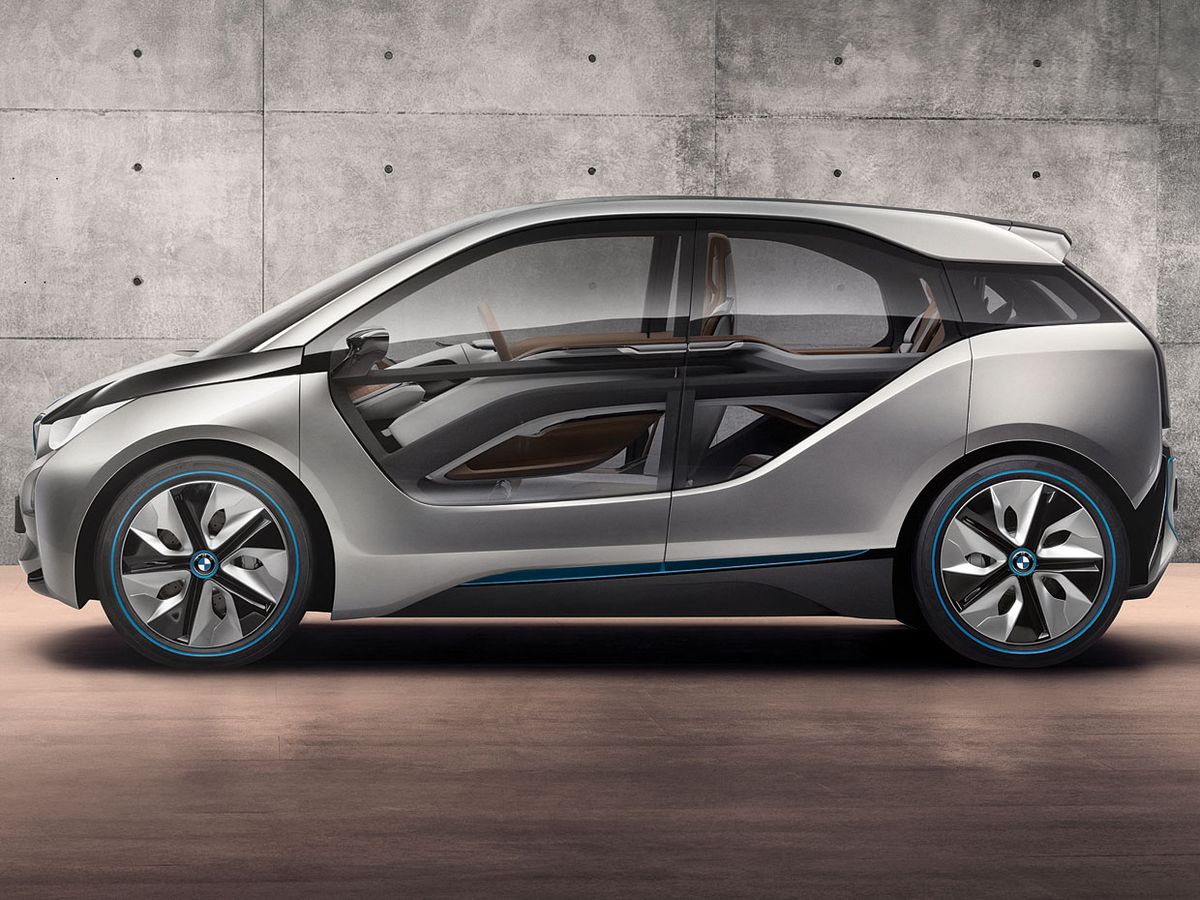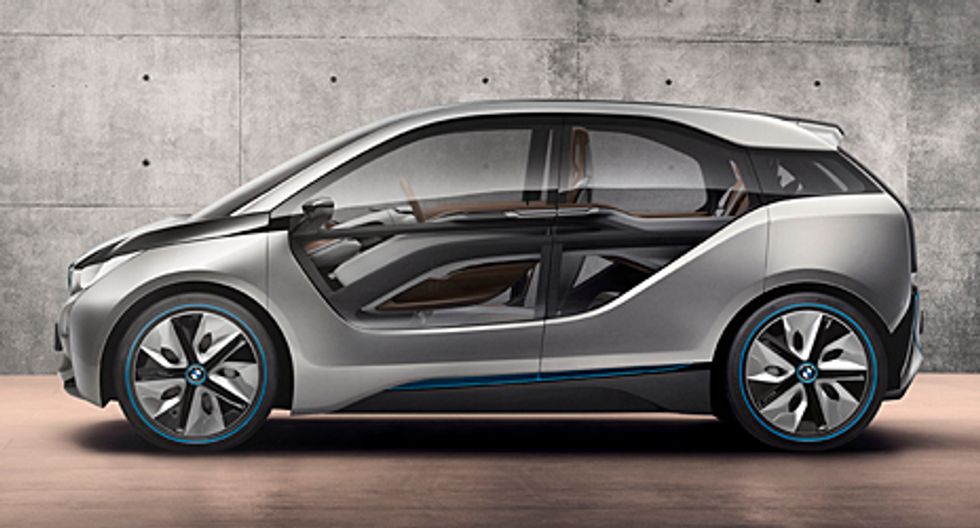Carbon-Fiber Cars
BMW will introduce the first affordable cars made with superlight carbon composites

Rumpelstiltskin famously spun straw into gold, and until recently, the idea of weaving superlight carbon fiber into mainstream cars also seemed a fairy tale.
The reason? Carbon-fiber-reinforced plastic, or CFRP, is expensive. Back in 1992 the cost was insanely high—U.K.-based McLaren Automotive needed 3000 man-hours to hand-layer, mold, and cure the material into the bones of the US $1 million F1, the world’s first street-legal carbon car. And even though McLaren now builds the 75-kilogram carbon chassis of its MP4-12C supercar in just 4 hours and sells the car for $225 000, that’s still too steep for the average buyer.
But now BMW is unveiling a technology that it says can mold a woven sheet of carbon fiber into a completed car part in less than 10 minutes. Those parts will go into the groundbreaking BMW i3, a plug-in hybrid that analysts estimate will cost just $40 000 to $50 000 per car, barely more than the price of a Nissan Leaf EV.
The i3 is a funky, tall-roofed city car with a roughly 160-kilometer range, a 160-km/h top speed, and a carbon-fiber “Life” module that weighs just 120 kg—less than some passengers. The car is set to emerge from a plant in Leipzig, Germany, in late 2013, and production is expected to ramp up to as many as 40 000 units a year.
In 2014 the company will start making the i8 hybrid, a futuristic sports car that starred in Mission Impossible: Ghost Protocol (2011). In both BMWs, the CFRP passenger module mates to a separate module that integrates the power train, lithium-ion battery, suspension, and aluminum crumple zones.
Building moderately priced cars from CFRP had long been a holy grail for automotive engineers, because a carbon chassis weighs half as much as a steel counterpart and 30 percent less than aluminum. The savings in weight translates into better performance and higher fuel efficiency. Therefore, it’s a material of choice for everything from Formula One racers and America’s Cup yachts to jet fighters, spacecraft, and the Boeing 787.
Cost was the sticking point. “Time and again, everyone said it was impossible,” says Joerg Pohlman, director of BMW’s carbon fiber projects. The technology took hundreds of millions of dollars of research and development to perfect.
The company now intends to begin building more than 1 million carbon-fiber components a year and to eventually base many of its cars on the material.
A linchpin of the plan is in Moses Lake, Wash., where the lure of cheap, clean hydropower sparked a $100 million partnership between BMW and Germany’s SGL, among the world’s top manufacturers of carbon-based products. BMW and SGL bill it as the world’s greenest, most efficient carbon-fiber plant. That’s one reason why the i3’s total life-cycle carbon dioxide emissions will be one-third less than that of the most efficient internal-combustion cars—50 percent less if the i3 is recharged using renewable energy.
Along Moses Lake’s 245-meter production line, bundles of 50 000 silky white polymer acrylic strands—each a tenth as thick as a human hair—are carbonized in furnaces at 1400 °C. Spools of the black fiber head to Wackersdorf, Germany, where they’re woven into sheets. At another German factory, sheets are pressurized, impregnated with liquid thermosetting plastic, and molded—in BMW’s speedier, proprietary take on resin-transfer molding—to form finished components in less than 10 minutes. The trail ends in Leipzig, where components are glue-welded together, forming the bones of a radically new type of car.
Pohlman says other efficiencies will make carbon fiber about as inexpensive to manufacture as aluminum within three to five years. Instead of 350 or 400 metal parts, the i3’s chassis has about 35. The simple construction—a bit like gluing together a model car—eliminates dozens of factory welding robots and manufacturing stations. And unlike steel—even clear-coated steel—carbon fiber never rusts, requires no costly corrosion treatments, and is designed to last for decades with minimal structural fatigue. The plastic underpinnings, experts say, will long outlast the cars and technology that surround them. True, that raises the question of how to recycle the stuff, which is tricky, because recycled fiber isn’t strong enough to reuse in a car chassis.
As ever, government fuel-economy regulations are largely driving this structural revolution, making “lightweighting” one of the biggest automotive trends around the world.
In the United States, President Obama has called for manufacturers of cars and trucks to double their fuel economy by 2025, to a lofty 54.5 miles per gallon (4.3 liters per 100 kilometers). The European Union targets a 40 percent reduction in automotive CO2 emissions by 2018; the target of 130 grams of CO2 per kilometer driven equates to 5.6 L/100 km, or 42 mpg.
The problem is that cars have been porking out for decades, adding power along with air bags and other crash protection. Then there’s such froufrou as 20-inch wheels, navigation systems, and seats that heat, cool, and massage their spoiled occupants.
Both regulators and customers “demand more safety, features, and comfort, but at the same time we are forced to [make them] lightweight,” Pohlman says. “And the response can’t be to take out seat belts and the nav system.”
This article originally appeared in print as "Carbon Car."


